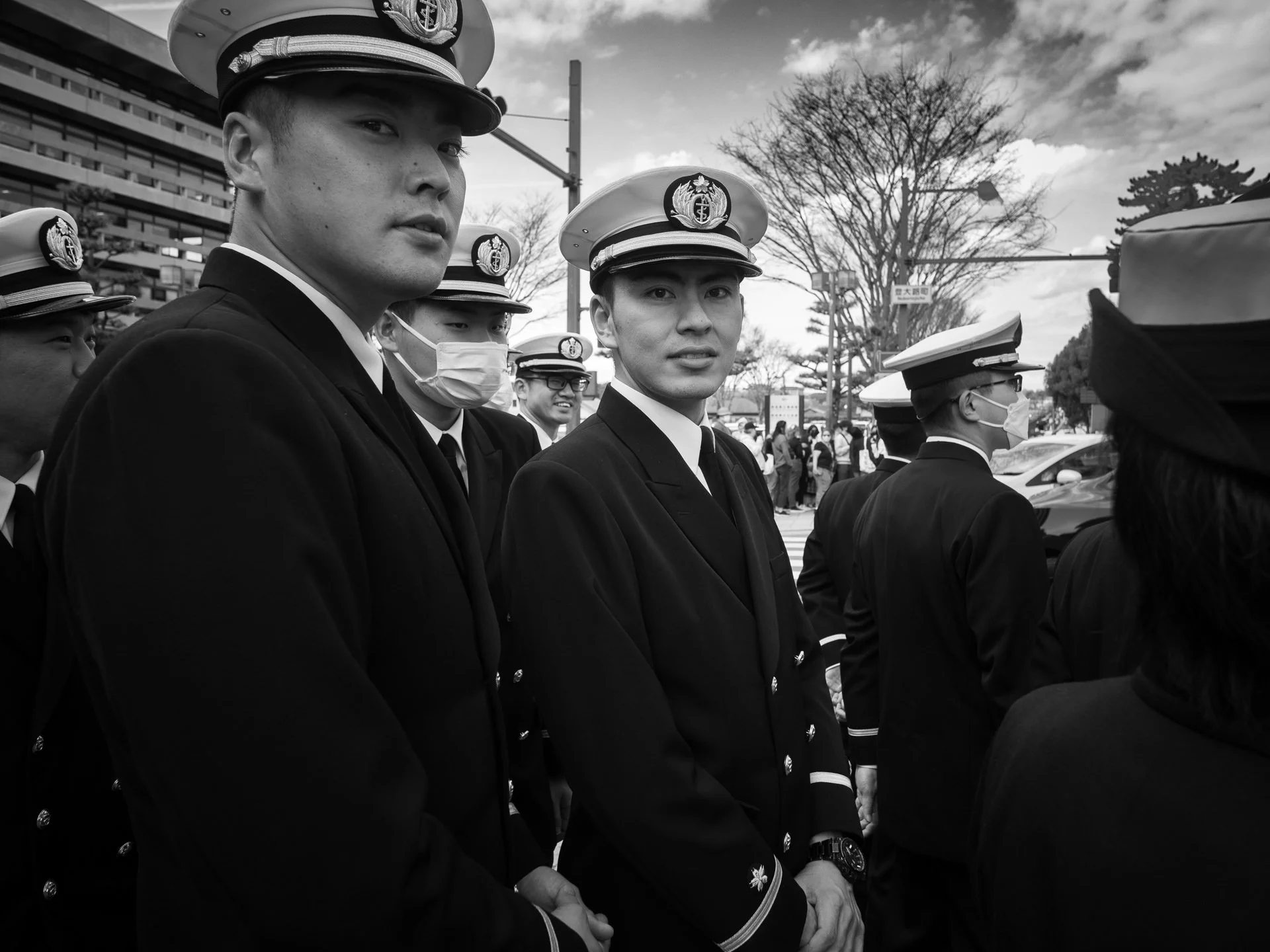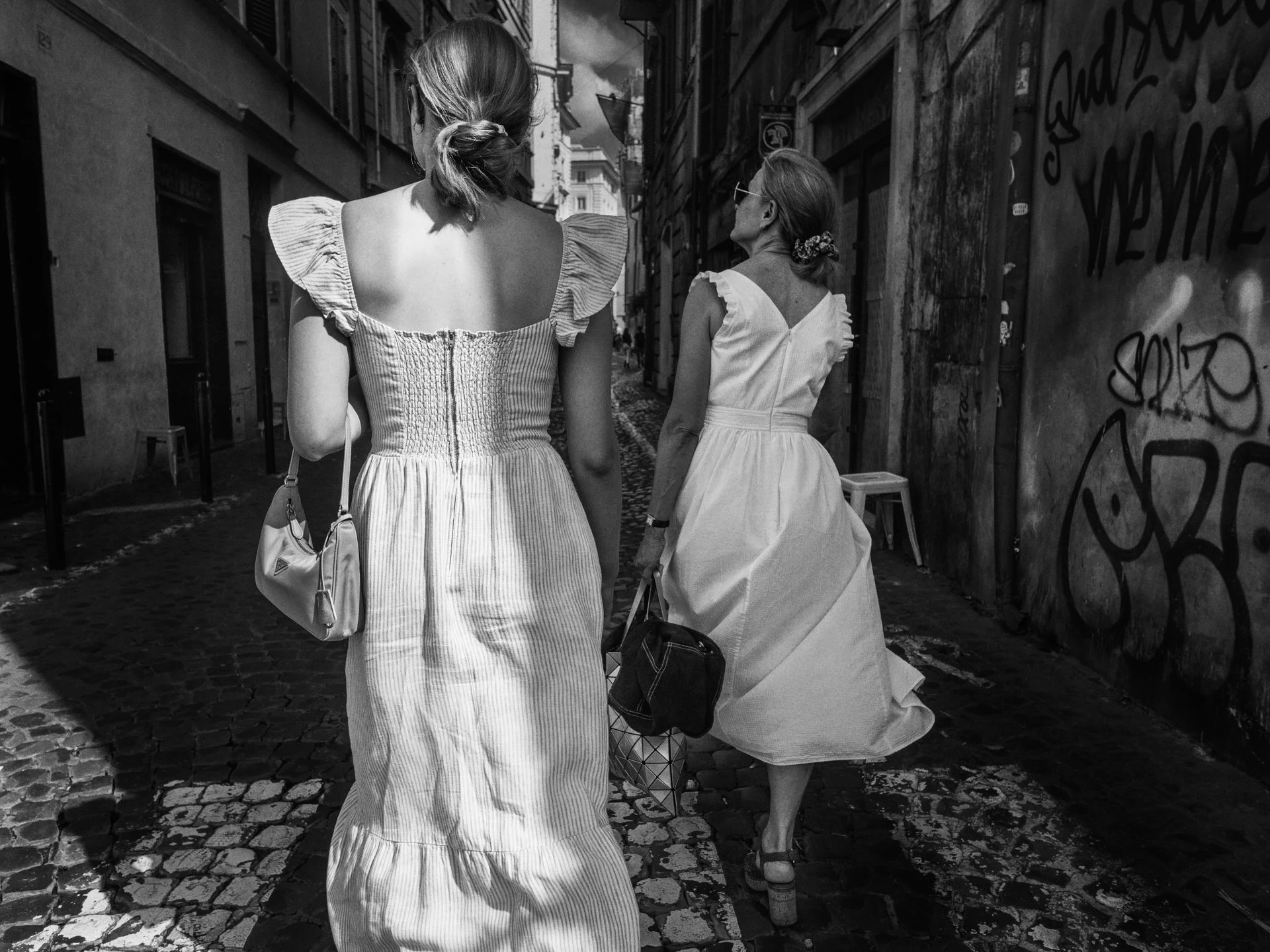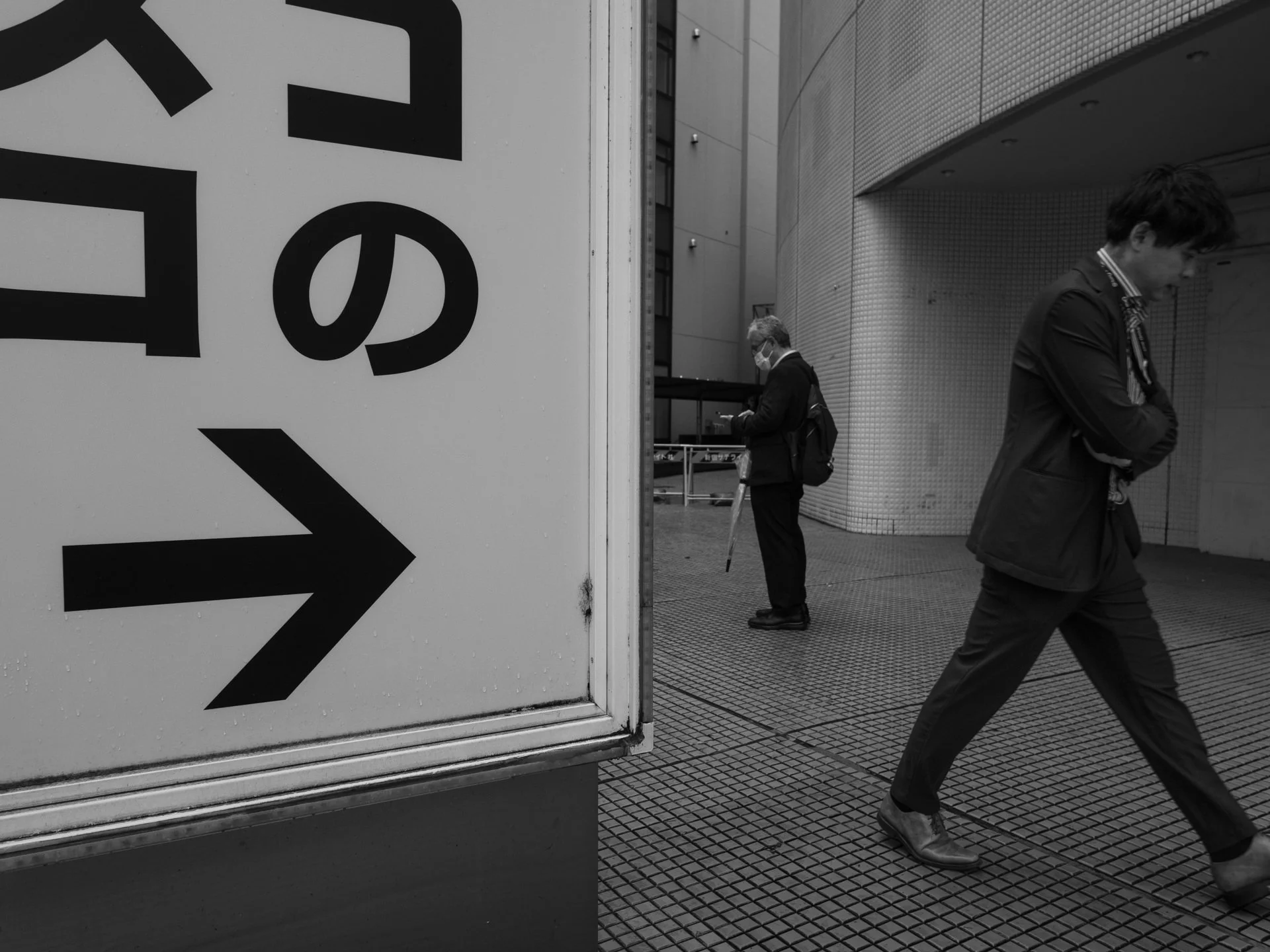The Micro Four Thirds System for Street Photography
I was surprised to find limited information about the use of the Micro Four Thirds system by street photographers. Therefore, I decided to write this article in my photo diary, sharing with you all the advantages I have found while working with this system.
Street photography is for me a form of artistic expression that captures the authentic essence of urban life through the lens of my camera. Sharing emotions, stories, and unique moments that unfold in the streets is what inspires and continually drives me to explore new visual horizons. Shooting people in public spaces often requires a discreet, fast, and lightweight approach to capture spontaneous and authentic moments.
The Micro Four Thirds (4/3) system has emerged as an ideal choice for street photography due to several features that perfectly suit my style of photography.
The configuration I use for street photography consists of the new OM-5, which I use for wider shots thanks to the wonderful Olympus M.Zuiko Digital ED 12mm F2.0 Lens, and the Olympus PenF, which I use for street portraits along with the Olympus M.Zuiko Digital 25mm F1.8 Lens.
Lisbon, 2023
LIGHTWEIGHT DESIGN:
Micro Four Thirds cameras are designed with a smaller sensor compared to traditional formats like full-frame, allowing for a more compact build. The reduction in size is crucial for street photography, where discretion is often essential to capture authentic moments without disrupting the surrounding environment.
Micro Four Thirds cameras are lighter and more portable, enabling photographers to move nimbly through the streets without bearing the weight and bulk associated with larger cameras. This lightweight quality is particularly advantageous when photographing for extended periods or when trying to blend in unnoticed in more informal situations.
Furthermore, the compactness of Micro Four Thirds cameras facilitates the use of accessories such as wrist or neck straps, making it easier and quicker to extract the camera for capturing snapshots without dealing with complications related to excessive bulk. In street photography contexts, where promptness is often crucial, this aspect can make a difference in capturing a fleeting moment.
The combination of compactness and lightweight design in Micro Four Thirds cameras is a fundamental feature for street photographers. It allows them to approach subjects without being intrusive, maintaining a discreet profile while capturing life in urban streets.
Naples, 2023
COMPACT LENSES:
Lenses available for the Micro 4/3 system are designed to be lightweight allowing the photographer to maintain a discreet profile. In street photography, it's often crucial to go unnoticed to capture authentic moments without influencing people's behavior. Smaller lenses make it easier to handle the camera, enabling photographers to react quickly to changes in the urban scene.
This is crucial when capturing rapid-fire snapshots or when moving through crowded spaces. These lenses can be less intimidating for subjects, allowing the photographer to approach without causing concerns. This encourages the creation of more natural and spontaneous images.
Tokyo, 2022
FAST AUTOFOCUS:
Micro 4/3 cameras often boast advanced autofocus systems, known for their speed and precision. This feature is particularly crucial in street photography, where subjects can move unpredictably, and the ability to focus quickly is essential for capturing snapshots without missing key moments. Here are some reasons why fast autofocus is an advantage for street photographers:
Street photography situations can evolve rapidly, with subjects moving, interacting, or changing expressions in an instant. Fast autofocus enables the photographer to adapt instantly to these changes, ensuring that subjects are always sharp and well-defined. The ability to focus quickly is crucial for capturing those ephemeral moments that define street photography. Whether it's a fleeting smile or a spontaneous gesture, fast autofocus allows the photographer to immortalize authentic snapshots without losing the spontaneity of the moment.
Urban streets can present changing light conditions, with shadows and lights continually evolving. A fast autofocus system can handle these variations, ensuring that focus remains reliable even in less than optimal lighting conditions. Street photography often requires the use of wider apertures to capture more light, which could increase the risk of blurry photos due to imprecise focusing. Fast autofocus mitigates this risk, ensuring that focus is sharp even with larger apertures.
Rome, 2022
OPTIMAL DEPTH OF FIELD:
The smaller sensor of Micro 4/3 cameras inherently provides a wider depth of field compared to larger sensors like those found in full-frame cameras. Depth of field refers to the range of distance within an image that appears acceptably sharp. In practical terms, this means that when shooting at the same aperture, Micro 4/3 cameras will generally have more elements in focus both in the foreground and background.
This is advantageous in street photography, where maintaining focus on both foreground and background elements is essential. A broader depth of field allows photographers to capture environmental details and include multiple layers in their compositions, enhancing the narrative depth of their images.
This means that photographers can set their focus at the hyperfocal distance, allowing for sharpness from a certain distance to infinity. This simplifies the need for constant focus adjustments, enabling photographers to concentrate more on the composition and decisive moments.
Micro Four Thirds (4/3) cameras offer a favorable environment for working with hyperfocal distance in street photography, even when shooting at wider apertures like f/4.
Rome, 2023
IMAGE QUALITY:
Cameras with a Micro 4/3 sensor, despite having smaller sensors compared to some cameras with larger sensor formats, can deliver excellent image quality, especially in favorable lighting conditions.
Here are some reasons why image quality is a key element for street photography: These cameras can capture sharp and clear details, making it possible to record crucial elements in urban scenes.
The ability to capture details can bring out the complexity and richness of an urban environment. Street photography often requires capturing images in variable or sometimes limited lighting conditions.
Those with a Micro 4/3 sensor have demonstrated good noise management in low-light situations, allowing photographers to obtain quality images even in poorly lit environments.
Tokyo, 2022
CONCLUSIONS:
I am extremely satisfied with the experience of using the Micro Four Thirds (4/3) system for street photography, and I would like to emphasize two key aspects that have significantly contributed to my appreciation.
The combination of lightness and a wide depth of field has made my street photography experience extremely enjoyable. The Micro 4/3 system has proven to be the ideal companion, allowing me to capture authentic moments with ease and precision.
The ability to focus on creativity without being hindered by weight or logistical restrictions is an added value that has enriched my photographic journey.
I am grateful to fully leverage the capabilities of this system, which has truly transformed my vision and approach to street photography.
Follow me on Instagram: @Camerastorta





